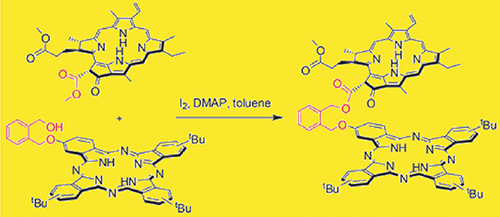Журнал "Макрогетероциклы"
Журнал является форумом специалистов, изучающих макрогетероциклические соединения
Navigation
News
Impact Factor 2021 = 1.200 has been issued by ISI Web of Knowledge (JCR 2021).
Search
ISSN 1998-9539
Synthesis and Spectral Properties of Phthalocyanine– Methylpheophorbide a Covalently Linked Dyad
Irina O. Balashova,a Victor E. Pushkarev,a,@ Vladimir I. Shestov,a Larisa G. Tomilova,a,b Oscar I. Koifman,c and Gelii V. Ponomarevd
aInstitute of Physiologically Active Compounds, Russian Academy of Sciences, 142432 Chernogolovka, Moscow Region, Russian Federation
bDepartment of Chemistry, M.V. Lomonosov Moscow State University, 119991 Moscow, Russia
cResearch Institute of Macroheterocycles, Ivanovo State University of Chemistry and Technology, 153000 Ivanovo, Russian Federation
dV.N. Orekhovich Institute of Biomedical Chemistry, 119121 Moscow, Russian Federation
@Corresponding author E-mail: pushkarev@ipac.ac.ru
Phthalocyanine–methylpheophorbide a covalently linked conjugate was first synthesized via transesterification of the α-keto methyl ester in methylpheophorbide-a with 2-(2-hydroxymethylbenzyloxy)-9(10),16(17),23(24)-tri-tert-butylphthalocyanine under mild conditions. UV-Vis absorption spectrum of the dyad exhibits panchromatic behavior owing to combination of the phthalocyanine and pheophorbide derived bands, while 1D and 2D NMR data indicate the presence of the intramolecular π-stacking interactions, and fluorescence emission spectrum in turn reflects energy transfer from the excited pheophorbide moiety to the phthalocyanine core.

| Attachment | Size |
|---|---|
| mhc150767p.pdf | 2.07 MB |
| mhc150767p_supp_inf.pdf | 123.63 KB |
- 2070 reads
- Русский
